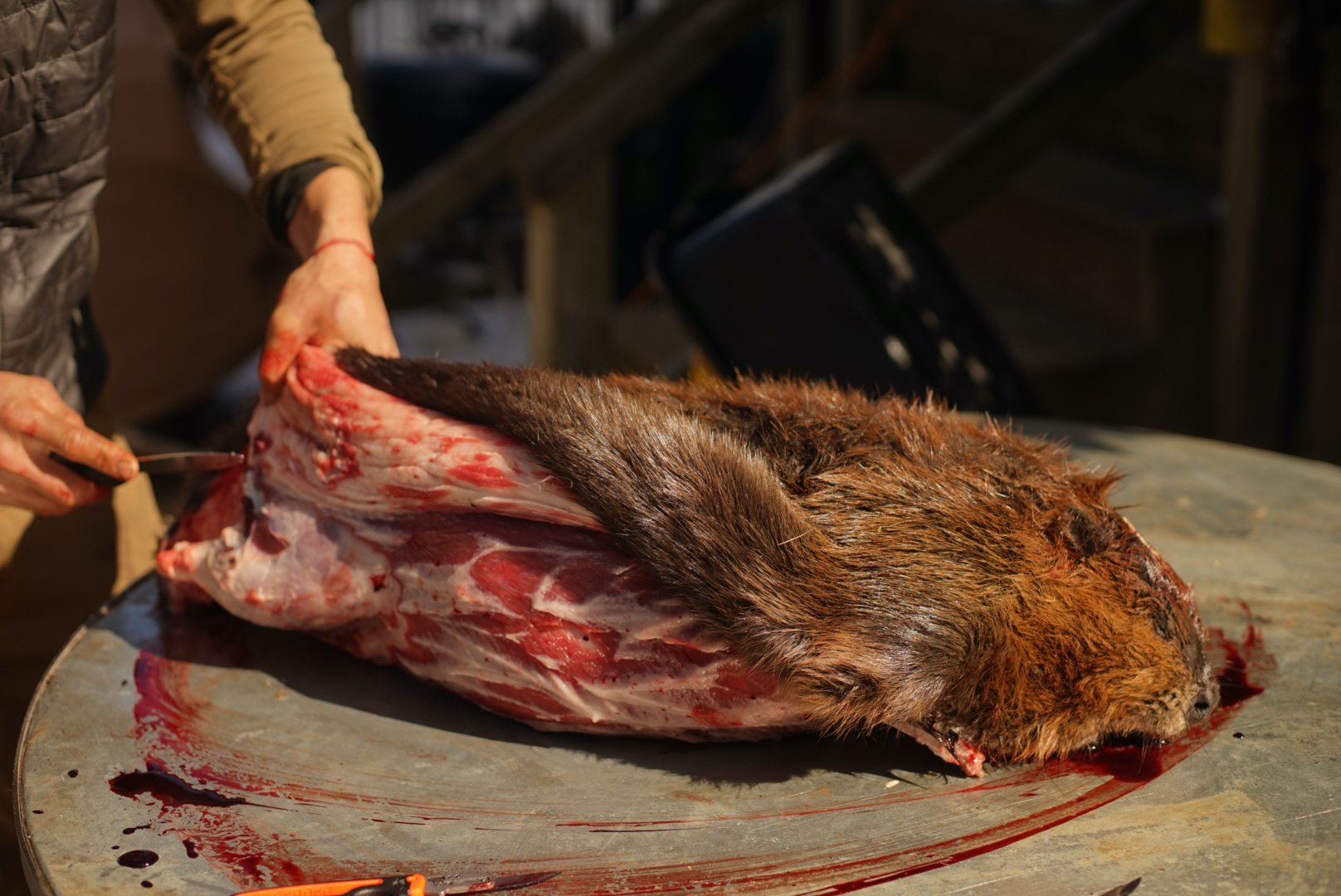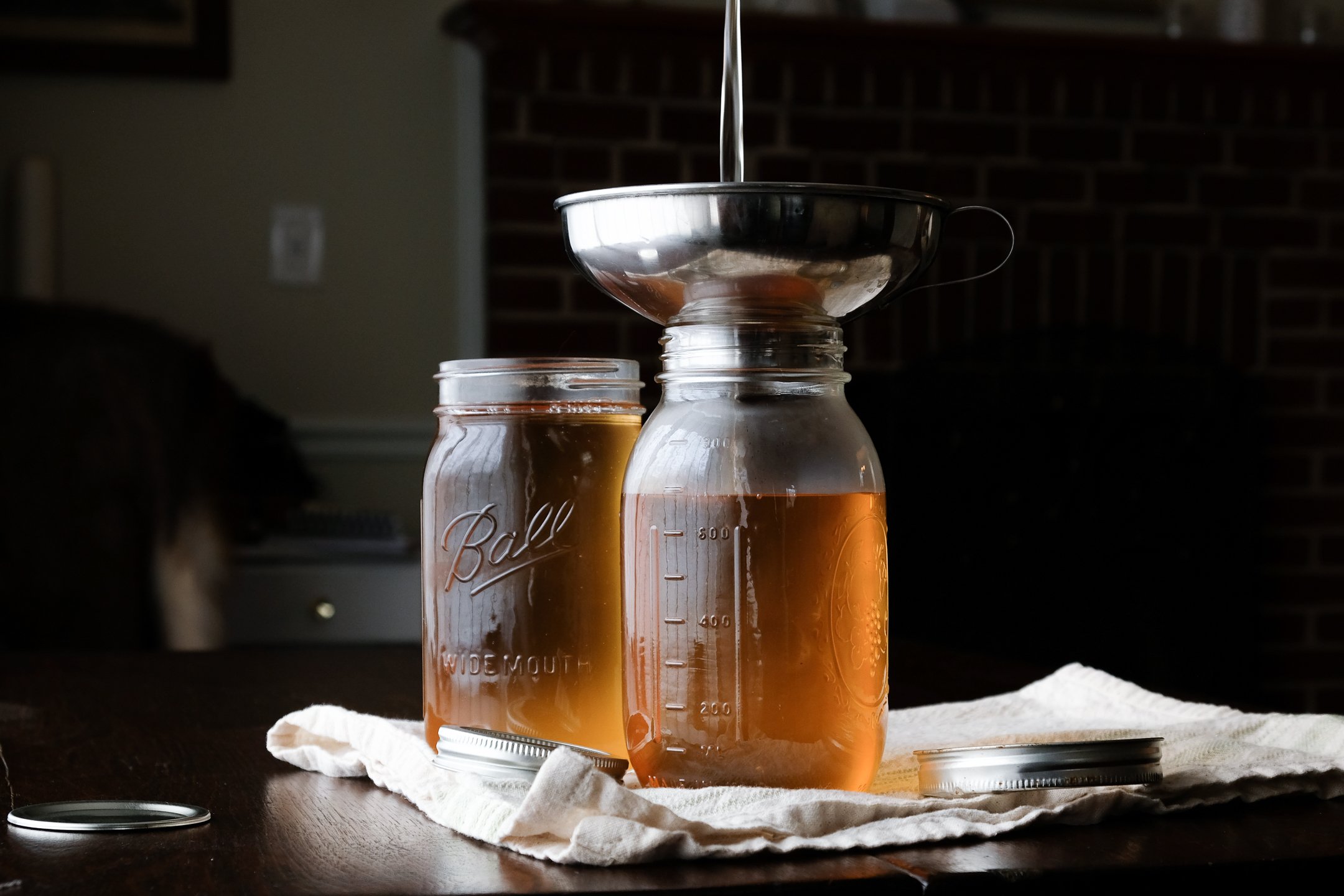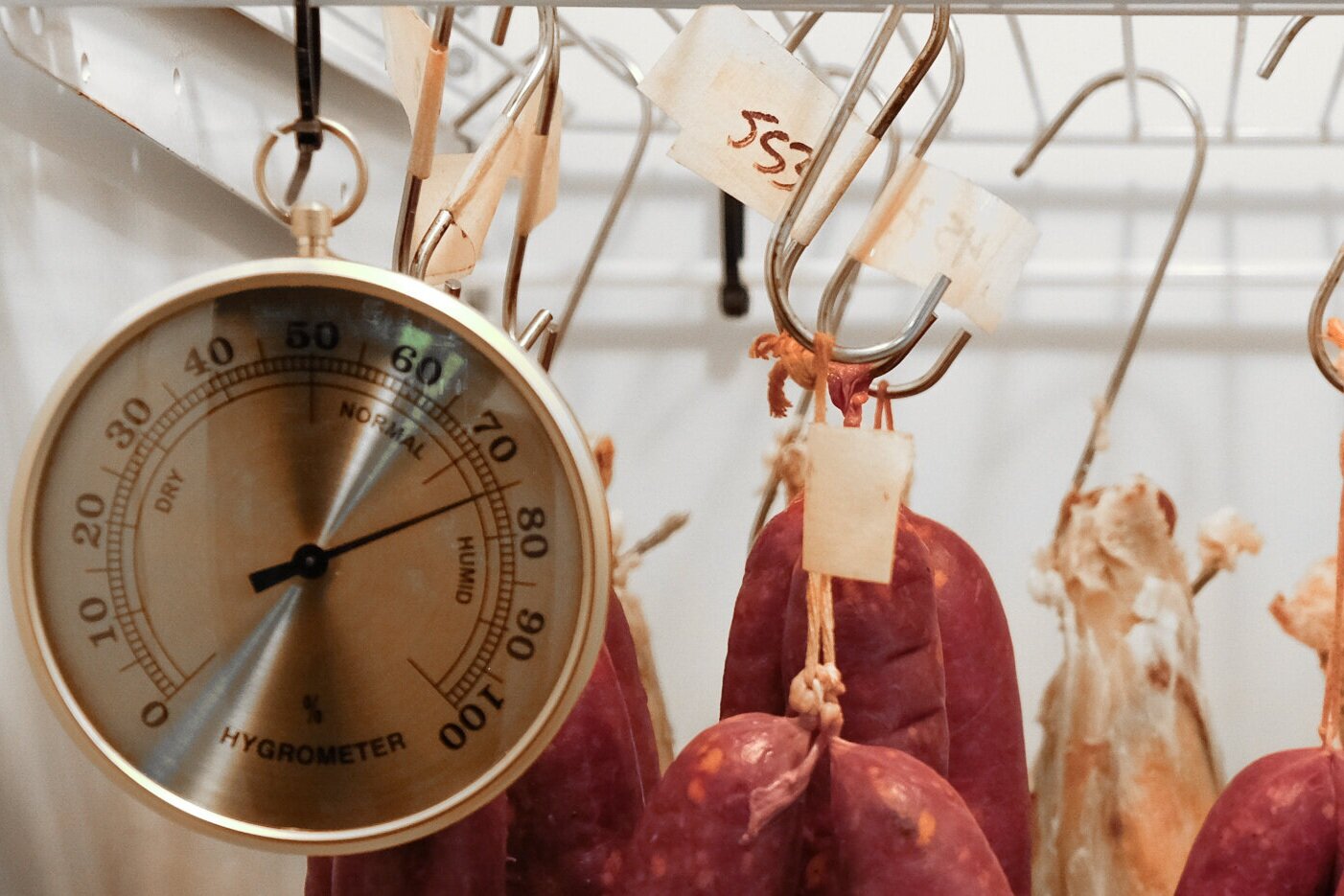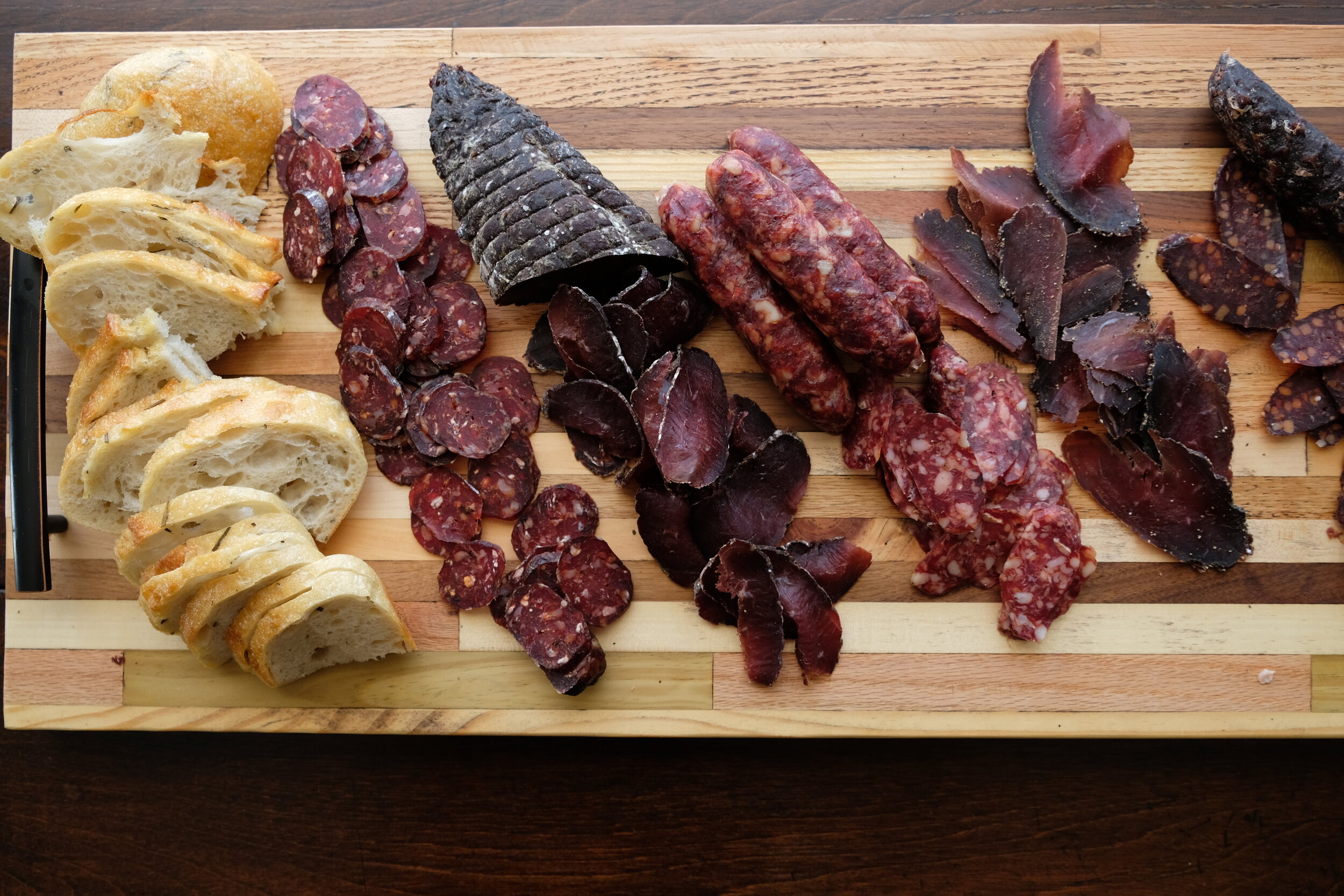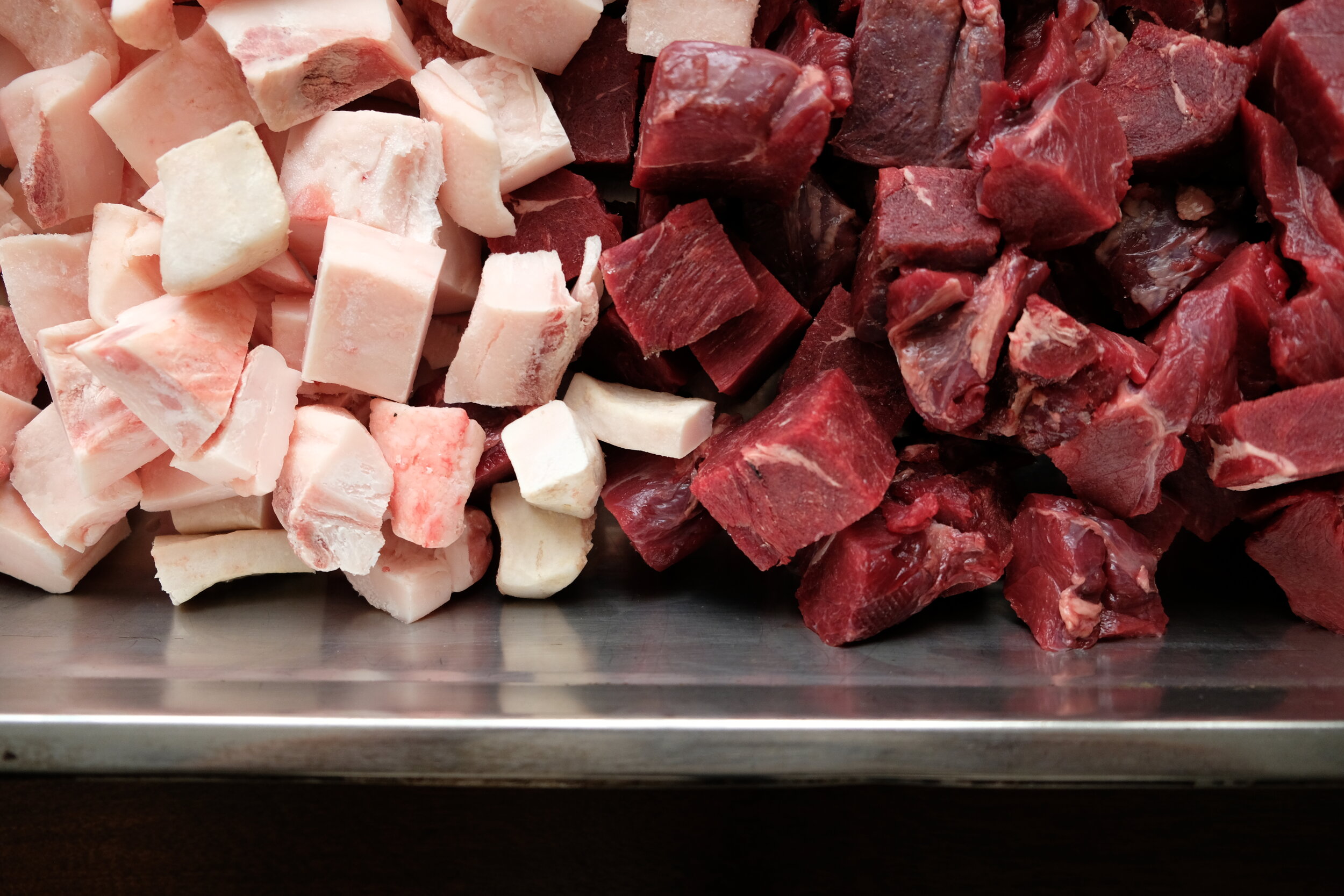Please sharpen your knife!
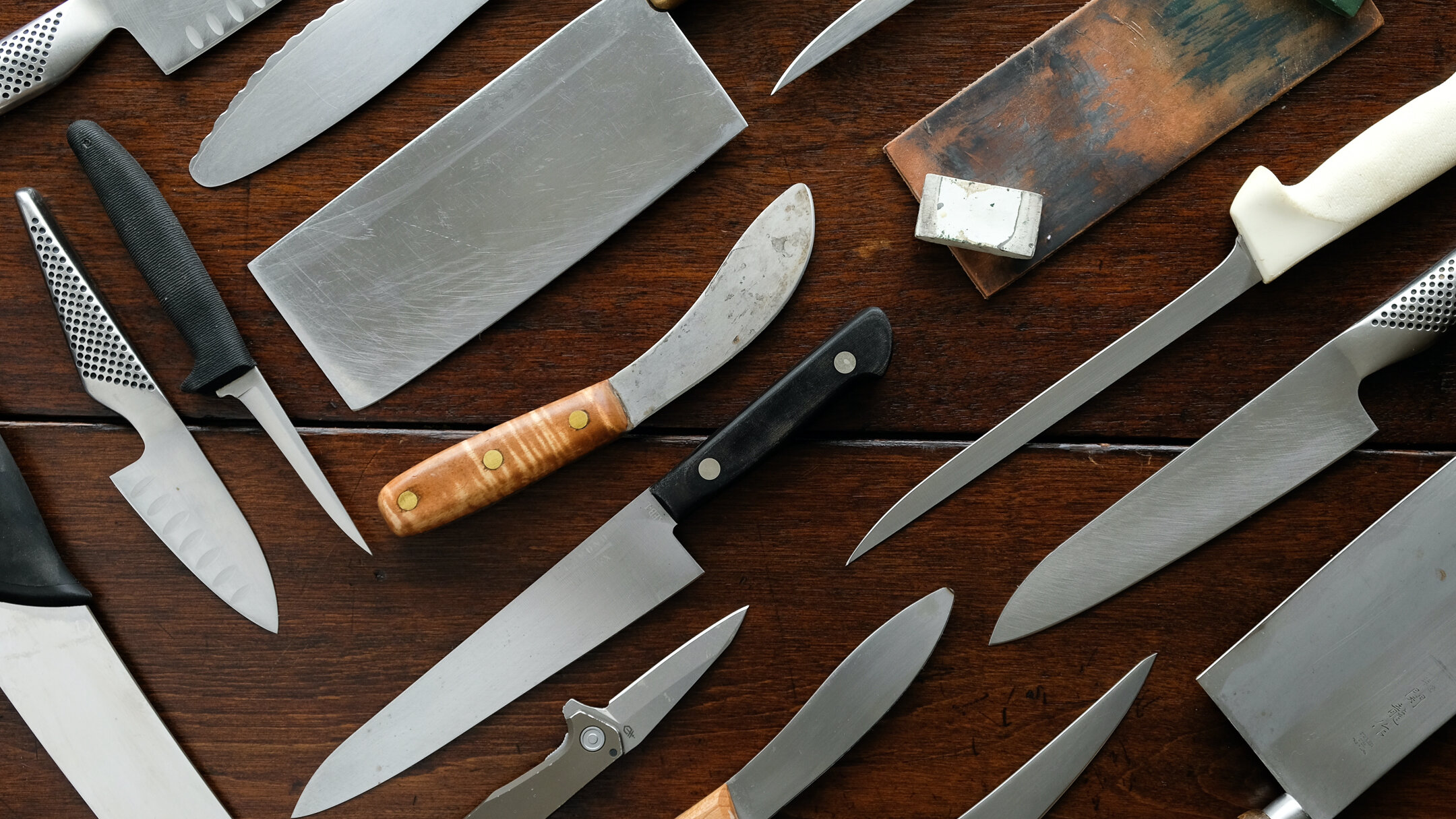
Q: “What kind of knife should I get?”
A: “What kind of sharpener do you have?”
It's astonishing to me how many cooks I have worked with who wielded expensive knives, yet didn’t own any knife sharpening tools. This same sentiment goes for home cooks- I’ve cooked in a lot of home kitchens with knife blocks full of fine steel, but all of them are dull and there isn't a knife sharpener on the property (knife blocks are silly, but that's a separate topic). I’ve been asked to carve many roasts and turkeys with long, shiny knives that cut like putty trowels. I've resorted to using my pocket knife to portion out a number of holiday birds and prime ribs over the years.
Knives, just like any precision tool (like your hunting rifle or bow) need periodic tuning for best performance. Just because you spent a bunch of money on a knife doesn't mean it will magically stay sharp. And if you use your knives a lot, they need to be touched up even more often. Anyone that says their knife is still razor sharp after years of use is either lying or only uses the knife once or twice a year to carve up a turkey.
Before you invest in a new chef, hunting or processing knife, invest in a sharpening system that works for you. You'll get a lot more out of your investment, and honestly, if you spend time learning how to sharpen a knife, you’ll realize that any decent knife can be scary sharp. You might even realize that you don’t need a new knife, and that the knife you were planning on replacing just needed some edge work.
The principle of sharpening a knife is simple: create an edge and polish the cutting surface. The smoother the surface, the less resistance there will be when cutting. It’s a basic concept, but it takes time and practice to do well. There are a few different ways to sharpen a knife, but the two most common would be stones and belts.
Sharpening:
Stones:
Stones are abrasive surfaces that will remove metal from the blade, allowing you to shape the edge and polish the surface. Some sharpening stones are literally stones, but most are composites with a consistent grit. The lower the grit number, the rougher the surface. A 300-400 grit stone would be used to shape an edge, then 600-1000 to further define the edge. 3000-15000 would be used to polish the surface.
The key to using a sharpening stone is maintaining consistent angle and pressure as the blade moves across the surface of the stone. This is the part that takes practice and patience. The stone will only remove a small amount of metal on each pass, so you will have to work the blade a fair number of times. On the plus side, if you make a mistake, you can easily correct it.
Many modern stones have guides that help you maintain the angle of the blade, which makes things a little easier. I have a few stones in various grits as well as some diamond plate travel sharpeners. I rarely use my large stones, but the travel size plates live in the truck and are super handy in the field or at a friends house where all the knives are dull.
Understanding how to use a sharpening stone is imperative. This is how most knives have been sharpened since people started making sharp things out of metals. If you can sharpen a knife on a stone, you’ll always have a sharp knife.
Belt sander:
I sharpen most of my knives with a belt sander. I have a 30” belt sander clamped to my workbench that has sharpened hundreds of knives over the years. I use 400 grit belts to re-edge, and 800-1600 grit belts to sharpen and polish the edge. I also use two leather strops with compound to get the final polish on knives.
Using a belt sander is the same as using a stone, but a lot faster and a lot less forgiving. If you twist the knife while making a pass, you could remove a lot of metal that you didn't intend to, and may have to reshape the edge. This is all well and good until you realize that the blade is getting smaller and smaller.
I practiced on a few thrift store knives and shaped and sharpened those until I got the hang of it. Definitely figure out the technique with a knife that you don't mind banging up until you are confident.
Recently I won a Worksharp Ken Onion edition sharpener at a BHA event and decided to give it a try. It's a well designed tool that is a lot more forgiving to use than the big belt sander. The adjustable guides make maintaining a consistent angle easy, especially with narrow knives (fillet) and knives with a lot of curve (skinners). Makes me wish I had gotten one of these years ago.
Polishing:
This is where a knife goes from razor sharp to scary sharp. You can use high grit stones or belts (3000-15000) or a leather strop and polishing compounds. This step is about smoothing out any imperfections in the metal of the blade. The smoother the surface, the less resistance, and the easier it is to make a cut.
A good test is to hold a piece of paper in front of you and cut it with your knife. A really sharp knife will cut the paper smoothly and cleanly, but take a close look at the fibers along the cut. Most of the time there will be single fibers of paper frayed along the cut. A freakishly sharp knife will cut all those fibers clean without any pulling, leaving a cut with no frayed fibers.
Upkeep:
Honing is essentially realigning the edge of the blade. As you use a knife, the thinnest part of the edge will deform, making it dull. Running a knife against a steel will realign this edge. This is how you keep a sharp knife sharp. You should hone your knives often, both to keep the edge sharp and extend the time between sessions on the stones or sander. As the edge of the blade deforms, more force is required for each cut, which will speed up the deterioration of the edge. I touch up my kitchen knives before using them, just a few swipes on each side of the blade before prepping dinner. While breaking down large animals, I try to hone my knives after 20 minutes of continuous cutting.
Sharpening steels come in many shapes and forms- I use steel, ceramic and diamond for different applications. The diamond is the most aggressive, and can remove a lot of metal, while the traditional steel and ceramic are less aggressive and are better at simply straightening out an edge.
Over time, regardless of how sharp you got your knife, it will start to dull. Meat, bones, skin, hair, rocks, dirt, and vegetable fibers will all eventually dull a knife. Depending on how dull the knife gets, you don't have to start from the beginning of the process. Sometimes a knife just needs a few passes on the 1000 grit, or maybe just some polishing. If you keep up with your knives you shouldn't have to put a new edge on it unless it gets damaged.
I hope this has convinced you to invest in a sharpening system if you don't already own one. To me, there is nothing more frustrating than trying to work with a dull knife, and there are few skills more fundamental than being able to make a cutting tool sharp. So, before you pull the trigger on a brand new Japanese gyuto, a super steel field knife, or a custom boning knife, ask yourself how you're gonna sharpen it. If you know how to sharpen a knife, you won’t own any dull knives.
Advertising disclosure: As an Amazon Associate I earn from qualifying purchases.


